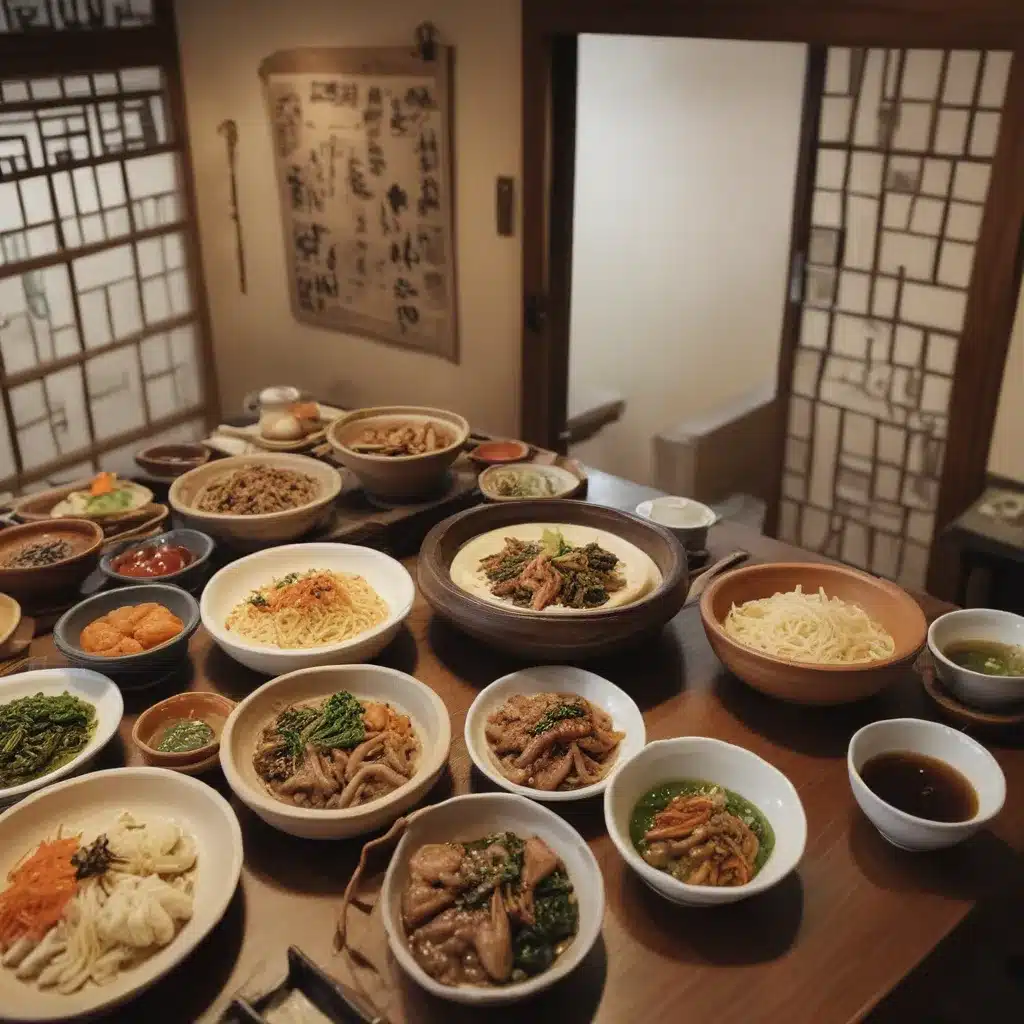
Discovering the Hidden Gem of Korean Temple Cuisine
Our first lunch during our recent trip to Seoul was an adventure in the realm of Korean temple cuisine. It was inspired by my previous stay in Koyasan, Japan, where my best friends and I had the pleasure of experiencing the serene and nourishing Shojin Ryori, the traditional Japanese temple cuisine.
I was determined to recreate a similar cultural experience in Korea, so I set out to find a reputable temple cuisine restaurant in Seoul. After some research, I stumbled upon Sanchon, a highly acclaimed establishment located in the vibrant Insadong district.
On Christmas day, we made our way through the winding alleyways of Insadong, following the signs that led us to the renowned Sanchon restaurant. As we stepped inside, I couldn’t help but feel a sense of anticipation – this was going to be a true cultural immersion.
The restaurant’s modern and gallery-like ambiance didn’t quite match my vision of a traditional temple cuisine setting, but I brushed aside my initial surprise and settled into the back corner of the establishment, which reminded me of a cozy Hanok, the traditional Korean house.
As I had learned from my research, Korean temple cuisine is unique in its avoidance of the five “stimulants” – onions, garlic, green onions, chili peppers, and Hong-eo (a type of fermented fish). Instead, the cuisine relies on the natural flavors of seasonal vegetables, grains, and herbs to create a harmonious and nourishing dining experience.
The Unexpected Flavors of Korean Temple Cuisine
As the meal commenced, the first thing that caught our attention was the peculiar beverage that was served. It had a sweet, sake-like quality, and while Fafa and I couldn’t quite agree on whether it was an alcoholic rice wine or a sweet tea, it certainly piqued our curiosity.
Next came the selection of appetizers, which included a seasonal porridge, watery plain kimchi, fried kelp, Dhania leaves (a favorite of Buddhist monks), and an array of seasonal vegetable pancakes and salads. To our surprise, the majority of these dishes were served cold and seemed to lack the bold flavors we had anticipated.
As we delved into the main course, we were presented with seven different wild herbs and vegetables, each with its own unique seasoning. Accompanying these were an array of side dishes, including tofu, potatoes, kimchi, Japchae (stir-fried glass noodles), and various other vegetables and mushrooms. While the main course had more discernible flavors, we still found ourselves struggling to finish some of the dishes.
The experience reminded me of the time Fafa and I had visited the renowned Korea House, where we had the opportunity to indulge in a traditional Korean tea ceremony. The Kohojae experience at Korea House was a true delight, with its delicate rice cakes, sweet rice puffs, and a delicious green tangerine tea from Jeju Island.
The Importance of Service in a Cultural Dining Experience
As we stood in front of the cashier, ready to settle the bill, another waiter approached us to inform us that we still had dessert coming. This unexpected turn of events left us a bit puzzled, as the service had felt rather rushed and unkind from the very beginning.
The brown-uniformed waiter, in particular, seemed to exude a general disdain for both us and life in general. He ignored our questions, snatched the plates without asking, and even brought the bill midway through our meal. This poor service, unfortunately, dampened the overall experience, leaving us wondering whether the food would have tasted better had the staff been more attentive and hospitable.
I’ve been mulling over this experience for weeks, contemplating whether to share my honest thoughts on the Korean temple cuisine I had in Seoul. It felt almost like admitting to being an uncultured individual, but I had always planned to share my journey, both the highs and the lows.
Embracing the Diversity of Korean Culinary Experiences
As I reflect on this experience, I realize that the diversity of Korean cuisine is truly remarkable. From the refined and delicate flavors of temple cuisine to the bold and fiery dishes that have captivated the world, there is something for every palate.
The Kohojae experience at Korea House, for instance, showcased the elegance and tradition of Korean tea culture, where we sipped on fragrant green tangerine tea while watching a mesmerizing traditional dance performance. This was a true cultural immersion, one that left us feeling refreshed and inspired.
Perhaps our experience at Sanchon was not quite what we had envisioned, but it still provided us with a unique glimpse into the intricacies of Korean temple cuisine. And who knows, the next time we visit a hotel in Seoul, we might just stumble upon another hidden gem that will ignite our senses and deepen our appreciation for the rich tapestry of Korean culinary traditions.
After all, the beauty of travel is in the unexpected discoveries, the moments that challenge our preconceptions, and the opportunities to expand our cultural horizons. And with each new experience, we grow a little wiser, a little more open-minded, and a little more attuned to the nuances that make each culinary journey so special.
So, whether you’re in search of the refined elegance of temple cuisine or the bold flavors that have captivated the world, Seoul’s diverse culinary landscape is sure to leave a lasting impression. Embrace the surprises, savor the flavors, and let the cultural immersion transport you to a realm of wonder and delight.

